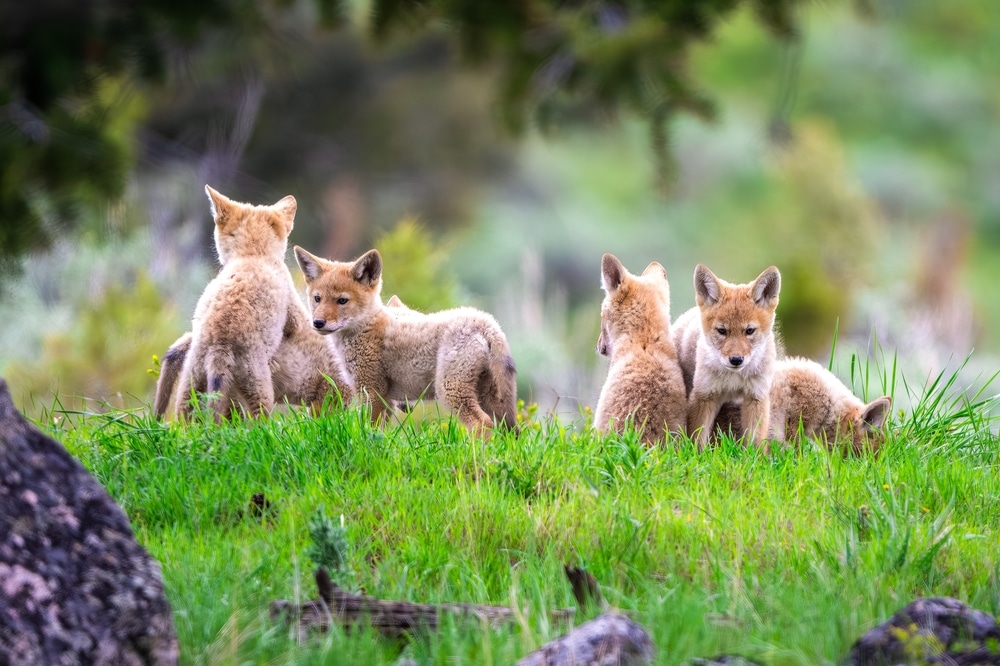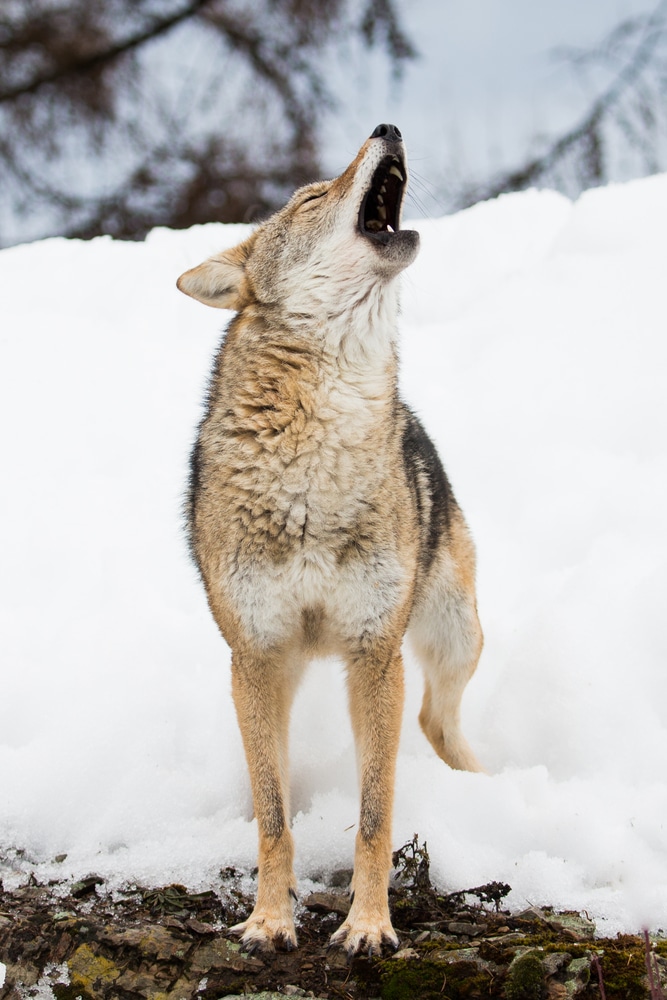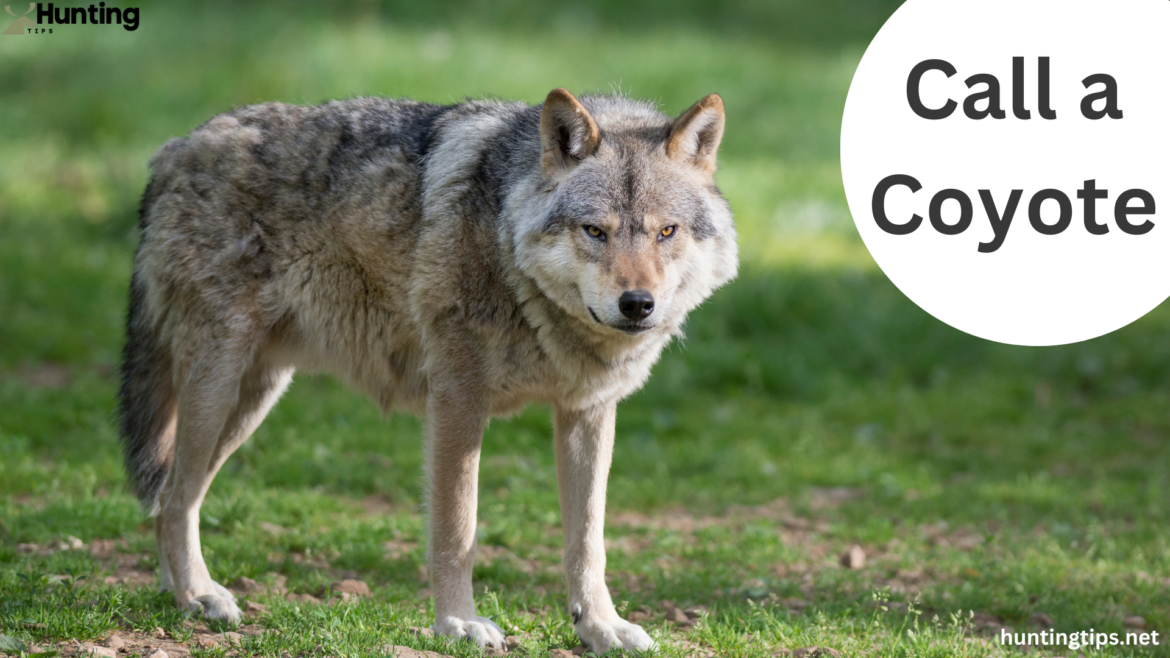Table of Contents
Calling a coyote is an art that blends patience, precision, and the perfect mix of sounds to draw in these cunning predators. Whether you’re a seasoned hunter or a beginner looking to sharpen your skills, mastering the techniques to lure a coyote can elevate your success in the field. From understanding the psychology of their behavior to choosing the right calls for different situations, this guide will walk you through effective strategies that can make all the difference in your next hunt. Prepare to outwit one of nature’s most elusive animals with these expert tips on how to call a coyote.
Understanding Coyote Behavior
Coyotes are social animals that communicate using a wide range of coyote sounds. These sounds can vary depending on the time of year, and understanding their behavior is critical to successful coyote hunting. During the breeding season, coyotes become more territorial, making male coyote howls highly effective. In contrast, pup distress calls work well in the summer and early fall when adult coyotes are protective of their young.
Coyotes are cautious animals with sharp senses, and the distance at which you place your call can make a difference. Keep the call within 100 yards of your position to avoid being detected before the coyote arrives.
Choosing the Right Call

There are various calls available, each with a unique sound and purpose. The most common types of calls include mouth calls, hand calls, and electronic calls. Each type has its advantages, and your choice will depend on the situation and personal preference.
Mouth Calls
A mouth call is one of the most traditional methods for calling coyotes with rabbit distress or other distress sounds. These calls are small, easy to carry, and can produce a variety of sounds, including rabbit in distress calls, pup distress, and coyote howls. However, using a mouth call requires practice, as it can be challenging to master the correct tones and pitches to effectively mimic the desired coyote sounds.
Hand Calls
A hand call is another manual option that requires you to blow into the device to create distress calls. These calls work well in areas with fewer coyotes, as the natural sound produced by a hand call can seem more realistic than an electronic option. Hand calls are great for close encounters where precision is necessary to call a coyote within range.
Electronic Calls
Electronic calls are an excellent choice for beginners or those looking for convenience. These devices come pre-programmed with a wide variety of calling sounds, including distress coyote calls, coyote howls, and rabbit in distress. The key advantage of electronic calls is the ability to create consistent and realistic sounds at different volumes, which helps in long-range situations where you need to bring in coyotes from a distance. Additionally, electronic calls can be set up away from your position, allowing you to remain concealed while luring the coyote closer.
Best Calling Sounds for Success
Coyotes are naturally curious and territorial, making them susceptible to a range of coyote calling techniques. The type of calling sounds you use should vary based on the season, the coyote’s behavior, and the location. Below are some of the most effective distress calls and coyote sounds to try:
Rabbit in Distress
The rabbit in distress call is a go-to sound for many coyote hunters. This high-pitched, frantic call mimics the sound of an injured rabbit, triggering a coyote’s instinct to investigate. Calling coyotes with rabbit distress is especially effective in the fall and winter months when food sources are scarce, and coyotes are more likely to respond to an easy meal.
Pup Distress
Using a pup distress call is an excellent technique, particularly during the summer when adult coyotes are protective of their young. This sound mimics the cries of a coyote pup in distress. Which can provoke aggressive responses from adult coyotes looking to defend their territory. Incorporating pup distress calls into your call sequence can increase your chances of drawing in a curious or territorial male coyote.
Coyote Howls
Coyote howls are an essential tool in your coyote calling techniques arsenal, especially during the breeding season or when you’re trying to locate a pack. These howls mimic the sounds of other coyotes in the area, which can trigger a response from territorial males or curious juveniles. A good strategy is to start your calling session with a series of coyote howls to establish dominance or communicate with other coyotes in the area.
Crafting a Successful Call Sequence

A well-planned call sequence is key to success. Rather than blasting out a random combination of distress sounds, it’s important to develop a sequence that makes sense to the coyotes you’re targeting. Here’s an example of a successful call sequence:
Start with soft coyote howls to establish territory or imitate a lone coyote.
After a few minutes, transition into pup distress or rabbit in distress calls to mimic an easy meal or a vulnerable young coyote.
If there’s no response after 10-15 minutes, use louder distress sounds like a distress coyote call or high-pitched rabbit in distress calls to cover more ground.
Repeat the sequence if necessary, giving the coyotes time to move closer.
This call sequence mimics a natural progression of events that a coyote would find difficult to resist. The variety of sounds keeps their attention, increasing the likelihood that they’ll approach within 100 yards.
Location and Setup
Location plays a huge role in successful coyote hunting. Coyotes are highly territorial and tend to frequent areas with a plentiful food supply, water sources, and cover. Set up your calls in areas with high coyote activity, such as near animal trails, open fields, or forest edges.
When setting up, try to remain downwind of where you expect the coyotes to approach. Coyotes have an excellent sense of smell, and if they catch your scent. They’ll likely retreat before coming within shooting range.
Timing Is Everything
The time of year also affects how successful your coyote calling and hunting efforts will be. Fall and winter are often the best times to hunt coyotes. As they are more desperate for food and less cautious about responding to distress sounds like rabbit in distress. During the spring and summer, pup distress calls work best as coyotes are more protective of their young.
Early mornings and late afternoons are the optimal times to hunt, as coyotes are most active during these periods. However, night hunting can also be effective, especially if you’re using an electronic call to create continuous calling sounds over a large area.
Final Coyote Calling Tips
Here are a few final coyote calling tips to help you achieve better results:
Use a mix of coyote vocalizations and distress calls to create a realistic scenario.
Be patient; sometimes it can take 20-30 minutes for a coyote to respond to your calls.
Adjust your volume and call types based on the location and behavior of the coyotes. Softer calls work better in heavily hunted areas, while louder calls may be necessary in wide-open spaces.
Scout your area ahead of time to find where coyotes are likely to travel or hunt.
Stay concealed and downwind to prevent coyotes from detecting your scent.
Conclusion
By mastering these coyote calling techniques and following these tips for calling in coyotes, you’ll greatly increase your chances of success in the field. Whether you’re using a mouth call, hand call, or electronic call. The key is to remain patient, adaptable, and aware of the coyote’s behavior and surroundings. With practice and persistence, you’ll soon become proficient at calling coyotes with rabbit distress and other effective calls.


